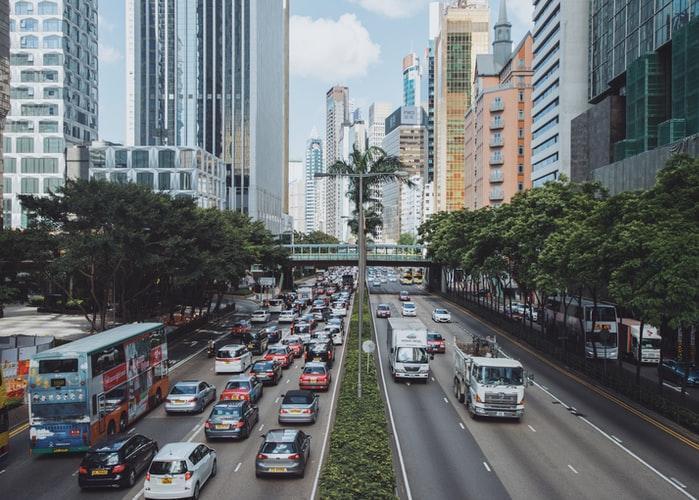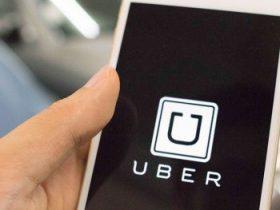By David Nutt |
Researchers say the future of transportation will be shaped by three “revolutions” – vehicle electrification, driverless cars and ride-sharing – that could result in fewer automobiles on the road, less fossil fuels extracted from the Earth and less pollution in the air. While the environmental gains may seem self-evident, the health benefits are difficult to quantify.
Now for the first time, a Cornell-led team has used transdisciplinary systems modeling to calculate those health benefits in the United States. By 2050, these innovations could potentially slash petroleum consumption by 50% and carbon dioxide emissions by 75% while simultaneously preventing 5,500 premature deaths, with an annual savings of $58 billion.
“There are all these important emerging trends in the development of transportation, and they are becoming a reality in the near future,” said Oliver Gao, the Howard Simpson Professor of civil and environmental engineering in the College of Engineering, who led the project.
“Have you ever thought about what all these revolutions mean for your health, for our climate, and for our environment, and for our energy systems?” Gao said. “These externalities don’t necessarily come directly in the mind of the general public, the travelers, or even the decision-makers.”
The group’s paper, “Shared Use of Electric Autonomous Vehicles: Air Quality and Health Impacts of Future Mobility in the United States,” published June 26 in Renewable and Sustainable Energy Reviews. The paper’s lead author is former postdoctoral researcher Shuai Pan.
“It is worthwhile to understand the effectiveness of these mitigation strategies, as deep de-carbonization is needed in the transportation sector,” Pan said.
Co-authors include Lewis M. Fulton from the University of California, Davis, and Yunsoo Choi and Jia Jung from the University of Houston. The research was supported by the U.S. Department of Transportation’s Center for Transportation, Environment and Community Health, and by Nanjing University of Information Science and Technology.
While previous studies have looked at certain facets of transportation innovation, such as the impact of electric vehicles on fuel usage and emissions, this is the first time anyone has employed a transdisciplinary systems approach that factored in human health and the associated economic benefits, according to Gao.
Gao’s systematics research group – which uses modeling to understand complex global challenges in engineering, business, societal well-being and sustainability – is uniquely positioned for such a task.
“A transportation engineer cannot address these questions,” Gao said. “Environmental science cannot address these questions. A health researcher cannot address these questions. However, this transdisciplinary group can do this.”
Pan, Fulton and Gao built an integrated assessment system that included a technical-economic mobility model, a chemical transport model and a health impact assessment tool. Then they projected the vehicle stocks, distance traveled, energy usage and carbon dioxide emissions in the continental U.S. through 2050, and quantified the impacts of changing emissions on concentrations of fine particulate matter in the atmosphere, as well as the ensuing health and economic benefits of populations in 10 major metropolitan areas.
Their simulations show that, depending on how widely the three “revolutions” are adopted, reductions in emissions from passenger travel could prevent between 2,300 and 8,100 premature deaths annually in the U.S. in 2050.
The largest number of prevented deaths coincided with large metropolitan areas, such as Los Angeles and Chicago. At the state level, California, Texas, New York, Ohio and Florida would see the largest decreases in premature mortality.
The associated economic benefits could range from $24 billion to $84 billion annually.
The study hangs on a number of assumptions and uncertainties. After all, driverless cars are not yet commercially available, and sales of electric vehicles lag far behind conventional gas guzzlers.
“Another key finding is that for carbon mitigations and health benefits, vehicle electrification is by far the most important piece, followed by shared mobility (ride-sharing) and then automation, ” Pan said. “The net energy impacts of self-driving vehicles are highly uncertain and automation alone may not dramatically affect energy use, emissions or vehicle-related pollution. ”
A complicating factor is that the efficiency improvement and projected cost reduction from automation could actually lead to increased travel and offset other gains.
“If we automate the vehicles, you might make the transportation system more efficient, but probably more people will travel longer distances,” Gao said. “So there is a balance, there is a trade-off.”
The study concludes that policymakers can help encourage the transition to electric vehicles and boost ride sharing, for example, by issuing tighter fuel economy standards, creating economic incentives for shared mobility and investing in charging infrastructure and technological developments.
A future of autonomous flying taxis
Of course, actually creating such transportation innovations is not possible without first determining their viability.
Another research project from Gao’s lab – published July 6 in Transportation Research Part A: Policy and Practice – explores the feasibility of an airport shuttle service that uses autonomous flying taxis as a means to mitigate urban congestion. The paper’s lead author is Emily Lewis ’20.
“While you are stuck in traffic from JFK [International Airport] to Manhattan, have you ever thought, oh, I wish I could be a bird, just to fly there. Actually, that dream is not too far away,” said Gao, who directs Cornell’s Center for Transportation, Environment and Community Health. “But how do you even architect a whole system, from the technology to market prediction and to operation? Would such an idea make economic sense at all?”
The study focuses on the concept of urban air mobility – essentially a transportation service for low-altitude airspace in metropolitan areas that features autonomous unmanned aerial vehicles.
Gao’s team – which included co-authors Jesse Ponnock ’20, Qamar Cherqaoui ’20, Scott Holmdahl ’20,Yus Johnson ’20 and Alfred Wong ’20 – focused on the three busiest airports in the U.S.: Atlanta, Los Angeles and Dallas.
They used a holistic, system-architecture analysis to identify each area’s key stakeholders and the goals that meet their needs, such as fleet management, infrastructure, traffic control, safety, user experience, financial viability and performance. The modeling also took into account the relationships between annual profit, mean time between safety incidents, upfront costs and the number of passengers shuttled per day.
“Because of its geographic, meteorological and also demand factors, Los Angeles turns out to be the best case for a pilot city,” Gao said.
The analysis identified wealthy commuters, long-distance commuters, business executives, event attendees, emergency transportation and vacationers as potential early adopters of an air mobility system.
What would such a system actually look like from a passenger’s perspective? It might not be too different from the ride-sharing services of today. The analysis recommended the system use FIFO (first in, first out) queuing and a smartphone interface for passengers, which may sound familiar to anyone who has ever hailed an Uber on their phone.
Also recommended: a hybrid energy source that incorporates electric energy for the autonomous vehicles.
But vehicles and apps are only part of it. For an air mobility system to become a reality, it would need the infrastructure to support it.
“This is not actually as mature as electrification or even automation,” Gao said. “This is even further away down the road. We are not comparing urban air mobility to other modes or arguing this is a better mode. We’re just saying that now, given the interest, first you need to be able to architect this. And then you will have a better sense about cost.”
Link: https://news.cornell.edu/stories/2021/07/transportation-innovations-could-boost-public-health?utm_source=pocket_mylist
Source: https://news.cornell.edu
















Leave a Reply